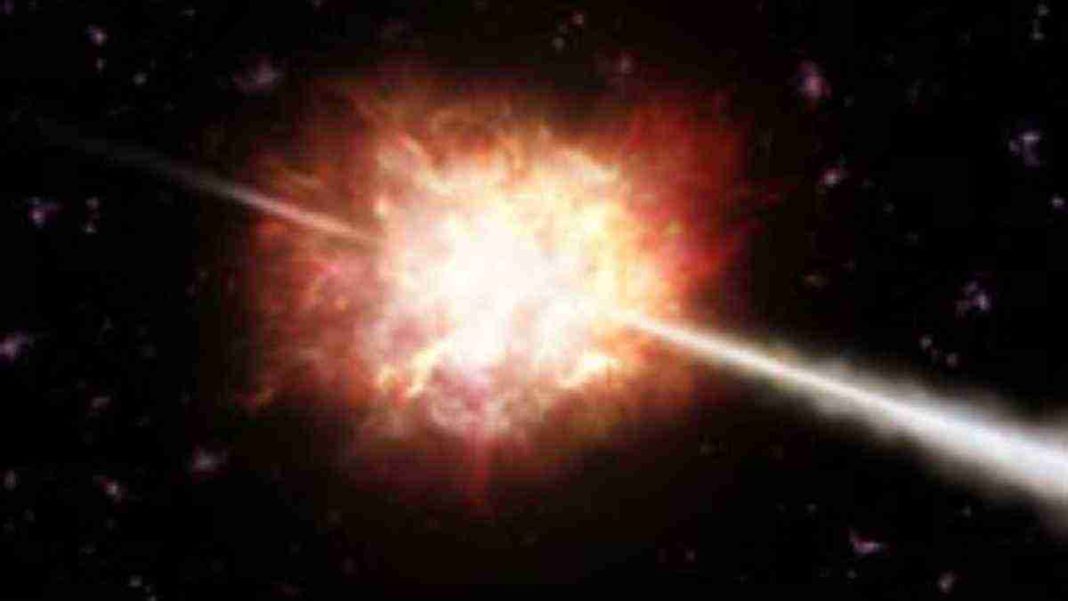UNITED STATES: In a groundbreaking discovery, astronomers have revealed unprecedented characteristics of the brightest and most energetic gamma-ray burst ever observed, GRB 221009A, earning it the nickname “BOAT” (Brightest Of All Time). This remarkable event, detected on October 9, 2022, has shed new light on the nature of gamma-ray bursts and provided tantalizing clues about the progenitor star that gave rise to this cosmic spectacle.
Gamma-ray bursts are colossal explosions that occur when massive stars collapse into black holes, releasing staggering amounts of energy in mere minutes. GRB 221009A surpassed all previous records, shining 70 times brighter and exhibiting significantly greater energy than any other gamma-ray burst ever witnessed.
Researchers turned to NASA’s NuSTAR (Nuclear Spectroscopic Telescope Array) X-ray telescope to uncover the unique characteristics of BOAT. Their research, which appeared on June 7 in the journal Science Advances, revealed a peculiar jet structure that the dying star was emitting.
Typically, gamma-ray burst jets are tightly focused and compact, emitting gamma rays in a concentrated beam. However, the jet from GRB 221009A displayed an unprecedented shape. It featured a narrow core with wider, sloping sides, setting it apart from any previously observed gamma-ray burst jet. Moreover, the energy of the material within the jet varied as it extended from the core, a phenomenon never before witnessed in a long gamma-ray burst jet.
Brendan O’Connor, the lead author of the study and an astronomer at George Washington University, expressed his excitement about the discovery. He stated that this occurrence was considerably more luminous and energetic compared to any previous gamma-ray bursts. Furthermore, upon examining the data from the NuSTAR, they discovered a distinctive configuration of jets, which sparked great enthusiasm.
The reason for the excitement was the inability to directly study the star that caused this event, as it has already vanished. Nonetheless, the data obtained now offers some indications about the mechanisms behind its explosive demise.
The newfound characteristics of BOAT’s jet have sparked intriguing questions regarding the nature of the progenitor star and the mechanisms behind the launch of these exceptionally bright jets. Scientists speculate that properties such as the star’s size, mass, density, or magnetic field may have influenced the structure of the jet during its formation and ejection.
While the exact cause of these distinct features remains elusive, the observations made by NuSTAR have provided valuable insights into the explosive nature of gamma-ray bursts. Furthermore, the study underscores the importance of understanding the physical processes involved in stellar collapse and black hole formation, shedding light on some of the most energetic phenomena in the universe.
The detection of GRB 221009A and the subsequent analysis of its characteristics were made possible through the combined efforts of multiple telescopes. Alongside NuSTAR, NASA’s Swift Observatory, NICER, the Hubble Space Telescope, the James Webb Space Telescope, as well as the ESA’s Solar Orbiter and XMM-Newton Telescope, played integral roles in capturing and interpreting the data.
The extraordinary observations of BOAT have propelled our understanding of gamma-ray bursts to new heights. As scientists continue to unravel the mysteries of these cosmic explosions, their findings will contribute to our knowledge of the universe and the remarkable events that shape it.
Also Read: James Webb Telescope Discovers Ancient Organic Molecules in Distant Galaxy



